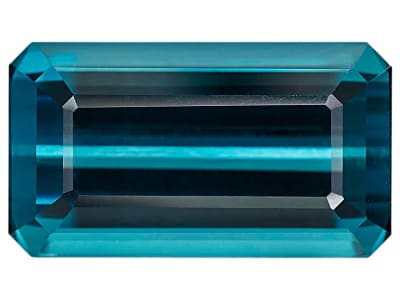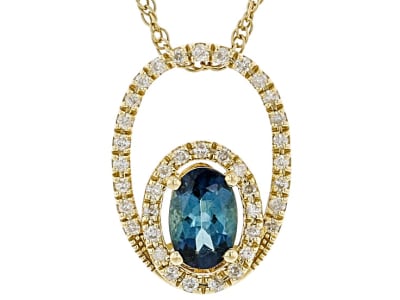Indicolite is one of the most valuable and collectible of all elbaite tourmalines, with hues spanning from lighter to deep, intense blues. Cutting indicolite can be a task for even the most skilled of cutters, as it is strongly pleochroic and appears darker when viewed down the crystal. This factor must be taken into consideration when cutting, as a loss of transparency and brilliance can occur in darker specimens.
General Information
Common Name
Indicolite
Species
Tourmaline
Transparency
Opaque-Transparent
Dispersion
Strength: Moderate Fire Value: 0.017
Refractive Index
1.615-1.665 Tolerance: (+0.011/-0.009)
Birefringence
0.018- 0.020
Optic Character
Uniaxial
Optic Sign
Negative
Polariscope Reaction
Doubly Refractive (DR)
Fluorescence
SWUV: Inert to weak bluish green
LWUV: Inert to weak bluish green
LWUV: Inert to weak bluish green
Pleochroism
Dichroic, strong dark blue and light blue
Hardness
7-7.5
Streak
White
Specific Gravity
2.90-3.10 Range:0.2/-0.06 Typical:3.060
Toughness
Fair
Inclusions
Indicolite is a type II clarity. stone. Stones might contain liquid and gas inclusions that are long and thin, reflective gas-filled fractures and color zoning.
Luster
Vitreous
Stability
Very Good
Fracture
Conchoidal
Cleavage
Poor, in two directions
Chemical Name
complex boro-silicate of Al, Mg and Fe
Chemical Formula
Na(Li,Al)1.5Al6(Si6O18)(BO3)3(OH)3(OH)
Crystal System
Trigonal
Chemistry Classification
Silicate
Indicolite Colors
-
 Blue
Blue -
 Blue
Blue -
 Blue
Blue
Alternate Names
Indigolite, Aqualite
Countries of Origin
Afghanistan; Mozambique; Pakistan; Unknown; Sri Lanka; Namibia; United States of America; Brazil; Madagascar; Nigeria
Care
Untreated stones just need normal care. Oiled or resin infused stones avoid steaming, harsh chemicals, ultrasonic, and temperature changes.


